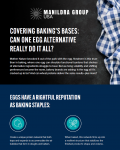Gluten-free 2.0: Where is the gluten-free trend going next?

Speaking at a session on celiac disease and gluten sensitivity at FNCE (the annual meeting of the Academy of Nutrition & Dietetics) Rachel Begun, a dietitian nutritionist living with celiac disease, said the explosion of interest in gluten-free foods was a “double-edged sword”.
We’re seeing more whole grains, more fortification. Not just empty starches and refined grains
On the one hand, the perception that avoiding gluten will help you lose weight and improve your health or athletic performance even if you don’t have celiac disease (which is not supported by any credible evidence, said Begun), continues to gain momentum as more celebrities and athletes promote gluten-free diets, she said.
On the other hand, however, the fact food manufacturers are now targeting an increasingly broad demographic of people that equate ‘gluten-free’ with ‘healthy’ means that many gluten-free products are in fact getting healthier, not because they don’t contain gluten, but because formulators have upped their game.
“We’re seeing more whole grains, more fortification. Not just empty starches and refined grains”, said Begun, who is a scientific/medical advisory council member for the National Foundation for Celiac Awareness.
Gluten 2.0: Taste, flavor, texture, convenience and far more products
The next wave of gluten-free products “gluten-free 2.0” - will be all about taste, flavor, texture and convenience, and will feature in every aisle of the grocery store, plus plenty of new channels from drugstores and club stores to foodservice, she predicted.
“The gluten-free category is still young and from a nutritional perspective there is definitely room for improvement.”
As for labeling, while firms will be in compliance with the law if they make gluten-free claims and their products contain <20ppm gluten from next August, more may also seek to gain gluten-free certification from a third party to stand out from the crowd and give consumers added reassurance as gluten-free statements start to proliferate, she predicted.
There is no validated biomarker or diagnostic test for gluten sensitivity
Much of her presentation was devoted to the issue of gluten sensitivity, which is not the same as celiac disease (which is an auto-immune disorder which causes damage to the gut wall if not diagnosed and addressed with a gluten-free diet).
Contrary to popular belief, there is no validated biomarker or diagnostic test for non celiac gluten sensitivity, and while experts in the field used to estimate that up to 6% of the US population might be affected, “we really don’t know” what the true figures are, she said.
“We don’t even know if gluten is the trigger.”
Double digit growth
According to a recent report from Mintel, US retail sales of gluten-free foods and beverages are estimated to reach $10.5bn in 2013.
In 2011-13, the market experienced growth of 44%, says Mintel, which predicts that it will grow at an even faster rate of 48% from 2013-16, to $15.6bn, at current prices.
Packaged Facts, meanwhile, says the market is rather smaller ($4.2bn in 2012), although it reports similar double digit growth rates.
Both say the market is being propelled by consumers avoiding gluten for perceived health benefits or as a weight management strategy rather than those with celiac disease or gluten sensitivity.
“The view that these foods and beverages are healthier than their gluten-containing counterparts is a major driver for the market, as interest expands across both gluten-sensitive and health-conscious consumers.”
Click here for more details.























